Who was Marshall McLuhan?
Marshall McLuhan, a Canadian philosopher, professor, and public intellectual, stands as one of the most influential figures in media theory and cultural studies of the 20th century. His work, characterized by its prescient insights into the nature of media and its effects on human consciousness and society, continues to resonate in our increasingly digital and interconnected world. This paper seeks to explore McLuhan’s life, ideas, and enduring legacy, situating his thought within the historical and intellectual context of his time while examining its relevance to contemporary issues in media, psychology, and culture.
Born in 1911 in Edmonton, Alberta, McLuhan’s academic journey took him from the University of Manitoba to Cambridge University, where he completed his PhD in English literature. His early career as an English professor at various universities in North America laid the foundation for his later work in media theory. McLuhan’s unique approach, combining literary analysis with observations about emerging technologies, would lead to groundbreaking insights about the nature of media and its impact on human society.
II. Biography of Marshall McLuhan
Herbert Marshall McLuhan was born on July 21, 1911, in Edmonton, Alberta, Canada. The son of Methodist parents, McLuhan’s early life was marked by a combination of Protestant values and a growing intellectual curiosity. His father, Herbert Ernest McLuhan, worked as a real estate and insurance salesman, while his mother, Elsie Naomi (née Hall), was a former actress who would later become a public speaker.
McLuhan’s academic journey began at the University of Manitoba, where he earned his BA in 1933 and MA in 1934, both in English literature. It was during this time that he first encountered the works of G.K. Chesterton, which would have a profound influence on his intellectual development and eventually lead to his conversion to Catholicism in 1937.
In 1934, McLuhan moved to England to pursue his studies at Cambridge University. There, he came under the influence of I.A. Richards and F.R. Leavis, two prominent figures in the New Criticism movement. Their approach to literary analysis, which emphasized close reading and the intrinsic qualities of texts, would later inform McLuhan’s unique method of media analysis. He completed his PhD at Cambridge in 1943 with a dissertation on the Elizabethan writer Thomas Nashe.
Upon returning to North America, McLuhan began his teaching career, first at the University of Wisconsin-Madison (1936-1937), then at Saint Louis University (1937-1944). In 1944, he moved to Assumption College (now the University of Windsor) in Ontario, where he taught until 1946. It was during this period that McLuhan began to develop his ideas about media and its effects on society.
In 1946, McLuhan joined the faculty of St. Michael’s College at the University of Toronto, where he would spend the rest of his academic career. It was here that he began to fully develop and articulate his theories about media and communication. His first major work, “The Mechanical Bride: Folklore of Industrial Man,” was published in 1951. This book, which examined the effects of advertising and popular culture on society, laid the groundwork for his later, more comprehensive theories about media.
The 1960s marked the height of McLuhan’s influence and public visibility. His most famous works were published during this decade: “The Gutenberg Galaxy” (1962), which explored the impact of print technology on Western culture, and “Understanding Media: The Extensions of Man” (1964), which introduced many of his most famous concepts, including “the medium is the message” and the idea of media as “extensions” of human senses and capabilities.
McLuhan’s provocative ideas and memorable aphorisms made him a celebrity intellectual during the 1960s and early 1970s. He appeared on television, gave numerous public lectures, and was sought after by corporations and governments for his insights into media and communication. In 1963, he was appointed to the Albert Schweitzer Chair in Humanities at Fordham University, a position he held for one year.
In 1967, McLuhan was named the director of the Center for Culture and Technology at the University of Toronto, a position that allowed him to further develop and disseminate his ideas. During this period, he collaborated with various artists, writers, and thinkers, including Woody Allen, who featured McLuhan in a cameo appearance in his 1977 film “Annie Hall.”
McLuhan suffered a stroke in 1979, which left him unable to speak. He died on December 31, 1980, in Toronto, leaving behind a legacy that continues to influence our understanding of media and its effects on society.
III. Overview of Key Ideas
Marshall McLuhan’s work is characterized by a number of key concepts and ideas that have had a profound impact on our understanding of media and its effects on society. This section will explore some of these central ideas in detail.
The Medium is the Message
Perhaps McLuhan’s most famous concept, “the medium is the message” suggests that the form of a medium embeds itself in the message, creating a symbiotic relationship by which the medium influences how the message is perceived. As McLuhan writes in “Understanding Media”:
“The medium is the message. This is merely to say that the personal and social consequences of any medium – that is, of any extension of ourselves – result from the new scale that is introduced into our affairs by each extension of ourselves, or by any new technology.”
This idea challenges the common assumption that the content of a medium is the most important aspect of communication. Instead, McLuhan argues that the medium itself, its characteristics and structure, have a more significant impact on society and human psychology than the specific messages it conveys.
Global Village
McLuhan coined the term “global village” to describe the phenomenon of the world’s culture shrinking and expanding at the same time due to pervasive technological advances that allow for instantaneous sharing of culture. In “The Gutenberg Galaxy,” he writes:
“The new electronic interdependence recreates the world in the image of a global village.”
This concept, formulated long before the advent of the internet and social media, presciently described the interconnected nature of modern communication technologies and their ability to bring distant cultures into immediate contact with one another.
Hot and Cool Media
McLuhan distinguished between what he called “hot” and “cool” media. Hot media, such as radio or film, are high definition and low in audience participation. They provide a lot of information and leave little for the audience to fill in. Cool media, like television or comics, are low definition and high in audience participation, requiring more active engagement from the audience to complete the experience.
In “Understanding Media,” McLuhan explains:
“There is a basic principle that distinguishes a hot medium like radio from a cool one like the telephone, or a hot medium like the movie from a cool one like TV. A hot medium is one that extends one single sense in ‘high definition.’ High definition is the state of being well filled with data.”
This distinction helped McLuhan to analyze the different psychological and social effects of various media forms.
The Tetrad of Media Effects
Later in his career, McLuhan developed the tetrad of media effects, a tool for analyzing the impact of any technology or medium. The tetrad consists of four questions:
- What does the medium enhance or intensify?
- What does it render obsolete or displace?
- What does it retrieve that was previously obsolesced?
- What does it flip into when pushed to the extreme?
This framework, introduced in his posthumously published book “Laws of Media” (1988), provides a systematic way to examine the complex effects of media technologies on society and culture.
Extensions of Man
McLuhan viewed all technologies and media as extensions of human physical and nervous systems. In “Understanding Media,” he writes:
“During the mechanical ages we had extended our bodies in space. Today, after more than a century of electric technology, we have extended our central nervous system itself in a global embrace, abolishing both space and time as far as our planet is concerned.”
This concept helps to explain why media have such profound effects on human psychology and society – they are not merely external tools, but extensions of our very selves.
Acoustic and Visual Space
McLuhan distinguished between acoustic space (the audible) and visual space (the visible). He argued that electronic media were shifting our sensory balance back towards the acoustic, creating a more immersive, holistic form of perception that he associated with pre-literate, tribal societies. This idea is closely related to his concept of the “global village” and his analysis of the effects of electronic media on social organization.
These key ideas form the core of McLuhan’s media theory and continue to provide valuable insights into the nature of media and its effects on human consciousness and society. In the following sections, we will explore how these concepts relate to various fields of study and their relevance to contemporary issues in media and technology.
IV. McLuhan’s Relevance to Depth Psychology and Trauma Treatment
Marshall McLuhan’s ideas, while primarily focused on media and communication, have significant implications for the field of psychology, particularly depth psychology and trauma treatment. His understanding of media as extensions of human sensory and cognitive processes provides a unique perspective on how external technologies can shape internal psychological states.
McLuhan and the Collective Unconscious
McLuhan’s concept of the “global village” resonates strongly with Carl Jung’s idea of the collective unconscious. Just as Jung posited a shared, universal layer of the psyche that transcends individual experience, McLuhan’s global village suggests a technologically mediated collective consciousness. In “Understanding Media,” McLuhan writes:
“The aspiration of our time for wholeness, empathy and depth of awareness is a natural adjunct of electric technology.”
This idea of a technologically facilitated collective awareness bears striking similarities to Jung’s notion of the collective unconscious as a repository of shared human experiences and archetypes. For depth psychologists, McLuhan’s work offers a framework for understanding how modern media technologies might be influencing the structure and content of the collective unconscious in the digital age.
Media as Extensions of the Psyche
McLuhan’s concept of media as “extensions of man” can be seen as analogous to the psychological concept of projection. Just as individuals project internal psychological content onto the external world, McLuhan suggests that societies externalize aspects of their collective psyche through the development and use of media technologies. This perspective offers depth psychologists a new way to understand the relationship between internal psychological processes and external cultural artifacts.
Trauma and Media Environments
McLuhan’s ideas about the psychological impact of different media environments have particular relevance for trauma treatment. His distinction between “hot” and “cool” media, for instance, could inform approaches to creating therapeutic environments for trauma survivors. Cool media, which require more active participation, might be seen as more conducive to the kind of engaged, present-focused attention that is often emphasized in trauma therapy.
Moreover, McLuhan’s insistence on the importance of the medium itself, rather than just its content, suggests that trauma therapists should pay close attention to the forms of media their clients engage with, not just the content of their media consumption. As McLuhan states in “Understanding Media”:
“The effects of technology do not occur at the level of opinions or concepts, but alter sense ratios or patterns of perception steadily and without any resistance.”
This insight could be particularly relevant for understanding how different forms of media might impact the nervous system regulation of trauma survivors.
The Tetrad and Trauma Treatment
McLuhan’s tetrad of media effects could provide a useful framework for analyzing the impact of various therapeutic interventions in trauma treatment. For example, we might ask:
- What aspects of the client’s experience does a particular therapeutic approach enhance or intensify?
- What patterns of behavior or thought does it render obsolete?
- What previously forgotten or suppressed aspects of the self does it retrieve?
- What happens when the therapeutic approach is pushed to its extreme?
This kind of systematic analysis could help trauma therapists to more fully understand the complex effects of their interventions on clients’ psychological states.
McLuhan and Embodiment in Trauma Treatment
McLuhan’s emphasis on the sensory and embodied aspects of media experience aligns well with contemporary approaches to trauma treatment that focus on body-based interventions. His idea that electronic media create a more immersive, multisensory experience echoes the emphasis in trauma therapy on holistic, embodied approaches to healing.
In “Understanding Media,” McLuhan writes:
“In the electric age, when our central nervous system is technologically extended to involve us in the whole of mankind and to incorporate the whole of mankind in us, we necessarily participate, in depth, in the consequences of our every action.”
This quote could be seen as anticipating the current emphasis in trauma treatment on the interconnectedness of mind and body, and the importance of addressing trauma at a somatic level.
McLuhan and Narrative Therapy
McLuhan’s ideas about the power of media to shape perception and experience align well with narrative approaches to trauma treatment. Just as McLuhan argued that different media create different “sensory ratios” that shape our perception of reality, narrative therapists work with clients to reshape their personal narratives and, by extension, their experience of reality.
McLuhan’s famous phrase “the medium is the message” could be adapted in a therapeutic context to suggest that “the narrative is the experience” – that is, the way we structure and tell our life stories fundamentally shapes our lived experience.
V. McLuhan’s Conceptualization of Trauma
While Marshall McLuhan did not directly address the concept of psychological trauma in his work, his ideas about media and their effects on human consciousness provide a unique lens through which to conceptualize trauma. By extending McLuhan’s theories, we can develop a media-centric understanding of trauma that complements existing psychological models.
Trauma as Media Disruption
In McLuhan’s framework, we might conceptualize trauma as a sudden, intense disruption of an individual’s media environment. Just as McLuhan argued that changes in dominant media forms lead to profound social and psychological shifts, we could view traumatic experiences as extreme, localized versions of this process. A traumatic event could be seen as a violent reconfiguration of an individual’s sensory and cognitive “media ecosystem.”
The Medium of Trauma
Applying McLuhan’s famous dictum “the medium is the message” to trauma, we might say that the form or “medium” of a traumatic experience is more significant than its specific content. This aligns with contemporary trauma theory, which emphasizes that it’s often not the specific details of a traumatic event that cause lasting psychological impact, but rather the way the experience overwhelms the individual’s capacity to process and integrate it.
Trauma and Sensory Ratios
McLuhan’s concept of media altering our “sensory ratios” could provide insight into the sensory and perceptual distortions often associated with trauma. Just as McLuhan argued that different media emphasize different senses and modes of perception, trauma might be understood as creating a drastic, usually maladaptive shift in an individual’s sensory processing and perception.
Trauma and the Extensions of Man
McLuhan’s idea of media as “extensions of man” could be applied to understand the dissociative aspects of trauma. In this view, traumatic dissociation could be seen as an extreme form of “extension,” where aspects of the self are projected outward as a defensive mechanism. This connects with McLuhan’s observation in “Understanding Media”:
“By putting our physical bodies inside our extended nervous systems, by means of electric media, we set up a dynamic by which all previous technologies that are mere extensions of hands and feet and bodily heat-controls… will be translated into information systems.”
Trauma and the Global Village
McLuhan’s concept of the “global village” could provide a framework for understanding collective or cultural trauma. Just as McLuhan argued that electronic media create a kind of global consciousness, we might view collective traumas as events that ripple through this interconnected consciousness, affecting even those not directly involved in the traumatic event.
The Tetrad and Trauma
Applying McLuhan’s tetrad of media effects to trauma, we might ask:
- What does trauma enhance or intensify in an individual’s experience?
- What aspects of pre-trauma experience does it render obsolete or displace?
- What earlier, perhaps developmental, experiences does trauma retrieve or bring back into focus?
- What does trauma “flip into” when pushed to extremes – perhaps post-traumatic growth or collective resilience?
Trauma as “Hot” and “Cool” Experiences
McLuhan’s distinction between “hot” and “cool” media could be applied to different types of traumatic experiences. Some traumas might be seen as “hot” – intense, overwhelming experiences that leave little room for the individual’s active participation or meaning-making. Others might be “cool” – more chronic or complex traumas that require ongoing, active engagement from the individual to make sense of them.
VI. Jungian Analysts and Existential Therapists with Similar Ideas
While Marshall McLuhan was not a psychologist or therapist, his ideas about media and human consciousness share interesting parallels with the work of several Jungian analysts and existential therapists. These thinkers, like McLuhan, were concerned with the deeper structures of human experience and the ways in which our perceptions and consciousness are shaped by our environment.
James Hillman and Archetypal Psychology
James Hillman, a post-Jungian analyst and founder of archetypal psychology, shares with McLuhan a concern for the imaginal dimension of human experience. Just as McLuhan argued that media shape our perceptions and consciousness, Hillman emphasized the role of archetypes and images in structuring psychic reality.
Hillman’s concept of “soul-making” – the idea that we create meaning and depth in our lives through engagement with archetypal images – resonates with McLuhan’s notion that we shape our tools and then our tools shape us. In “Re-Visioning Psychology,” Hillman writes:
“By soul I mean, first of all, a perspective rather than a substance, a viewpoint toward things rather than a thing itself.”
This emphasis on perspective and viewpoint aligns closely with McLuhan’s insistence on the importance of the medium in shaping our perception of reality.
Rollo May and Existential Psychology
Rollo May, a key figure in existential psychology, shares with McLuhan an interest in the impact of modern technology on human experience. In his book “Love and Will,” May writes about the “schizoid world” created by modern technology, a concept that echoes McLuhan’s concerns about the psychological effects of electronic media.
May’s emphasis on creativity as a response to existential anxiety also resonates with McLuhan’s view of artists as important figures in understanding and navigating new media environments. McLuhan famously said, “Art is anything you can get away with,” suggesting a view of art as a form of exploration and experimentation with the boundaries of perception and experience.
Wolfgang Giegerich and Technological Consciousness
Wolfgang Giegerich, a post-Jungian analyst, has developed ideas about the “technological consciousness” that bear striking similarities to McLuhan’s work. Giegerich argues that modern technology has fundamentally altered our psychological reality, creating a new form of consciousness that is more abstract and divorced from immediate, sensory experience.
In his book “The Soul’s Logical Life,” Giegerich writes:
“The soul has emigrated into the abstract forms of our technological world and our scientific theories.”
This concept of the soul “emigrating” into technology echoes McLuhan’s idea of media as “extensions of man.”
R.D. Laing and the Politics of Experience
R.D. Laing, a psychiatrist associated with the existential-phenomenological tradition, shared with McLuhan an interest in how social and technological environments shape individual experience. Laing’s concept of the “divided self” – the idea that modern society creates a split between our authentic selves and our social personas – resonates with McLuhan’s analysis of the fragmenting effects of electronic media.
In “The Politics of Experience,” Laing writes:
“We live in a moment of history where change is so speeded up that we begin to see the present only when it is already disappearing.”
This observation about the acceleration of experience in modern life closely parallels McLuhan’s ideas about the impact of electronic media on our perception of time and space.
Jean Gebser and Structures of Consciousness
Jean Gebser, a cultural philosopher and poet, developed a theory of the evolution of human consciousness that shares interesting parallels with McLuhan’s work. Gebser’s concept of “integral consciousness” – a new structure of awareness that he saw emerging in the 20th century – resonates with McLuhan’s ideas about the transformative effects of electronic media.
In his book “The Ever-Present Origin,” Gebser writes:
“The new reality is a world of forces and energies; it is a world of quality and intensity rather than of mere quantity and extensity.”
This description of a shift from a quantitative to a qualitative understanding of reality echoes McLuhan’s analysis of the shift from mechanical to electronic technologies.
VII. Cultural Forces and Historical Materialism
Marshall McLuhan’s work can be understood as a response to and analysis of the profound cultural and technological changes of the mid-20th century. His ideas were shaped by and in turn helped to shape the intellectual and cultural landscape of his time. Understanding the historical and material conditions that gave rise to McLuhan’s theories can provide valuable insight into their significance and enduring relevance.
The Rise of Electronic Media
McLuhan’s work was fundamentally a response to the rapid proliferation of electronic media in the mid-20th century. The rise of television, in particular, represented a seismic shift in the media landscape, one that McLuhan saw as having profound implications for human consciousness and social organization.
In “Understanding Media,” McLuhan writes:
“The TV image is visually low in data. The TV image is not a still shot. It is not photo in any sense, but a ceaselessly forming contour of things limned by the scanning-finger. The resulting plastic contour appears by light through, not light on, and the image so formed has the quality of sculpture and icon, rather than of picture.”
This analysis of the unique characteristics of the television image exemplifies McLuhan’s attention to the specific material qualities of different media forms and their psychological effects.
Post-War Consumer Culture
McLuhan’s work was also deeply influenced by and responsive to the rise of consumer culture in the post-World War II era. His first book, “The Mechanical Bride” (1951), was a critical analysis of advertising and its effects on society. McLuhan’s approach, which combined close reading of advertisements with broader cultural analysis, set the stage for his later, more comprehensive theories about media and society.
The Cold War and Global Communication
The geopolitical context of the Cold War had a significant impact on McLuhan’s thinking about global communication. His concept of the “global village” can be seen as both a description of and a response to the increasing interconnectedness of the world in the age of satellite communication and nuclear threat.
In “War and Peace in the Global Village” (1968), McLuhan and co-author Quentin Fiore write:
“The hydrogen bomb is history’s exclamation point. It ends an age-long sentence of manifest violence!”
This dramatic statement reflects McLuhan’s view of how new technologies were fundamentally altering the nature of global conflict and communication.
The Counterculture and Media Experimentation
McLuhan’s rise to prominence in the 1960s coincided with the emergence of the counterculture movement, which was characterized by experimentation with new forms of media and communication. McLuhan’s ideas about the transformative potential of new media resonated strongly with this cultural moment, contributing to his status as a countercultural icon.
Technological Determinism and Its Critics
McLuhan’s work can be seen as a form of technological determinism – the idea that technology is the primary driver of social and cultural change. This perspective was both influential and controversial, attracting criticism from scholars who argued for a more nuanced understanding of the relationship between technology and society.
Raymond Williams, a key figure in the development of cultural studies, critiqued McLuhan’s technological determinism in his book “Television: Technology and Cultural Form” (1974). Williams argued for a more dialectical understanding of the relationship between technology and society, emphasizing the social and economic factors that shape the development and use of technologies.
Media Ecology and Systems Thinking
McLuhan’s work was part of a broader intellectual movement in the mid-20th century towards systems thinking and ecology. His concept of media environments as complex, interconnected systems that shape human perception and behavior aligns with contemporaneous developments in fields such as cybernetics and general systems theory.
Neil Postman, a student of McLuhan who went on to develop the field of media ecology, wrote in “Teaching as a Conserving Activity” (1979):
“Media ecology looks into the matter of how media of communication affect human perception, understanding, feeling, and value; and how our interaction with media facilitates or impedes our chances of survival.”
This definition of media ecology clearly shows the influence of McLuhan’s ideas about the pervasive effects of media on human consciousness and society.
VIII. Relevance to Emerging Trends in Technology and Media
Marshall McLuhan’s ideas continue to be highly relevant to understanding emerging trends in technology and media. His prescient insights into the effects of electronic media on human consciousness and social organization provide a valuable framework for analyzing the impact of digital technologies and new media forms.
The Internet and Social Media
McLuhan’s concept of the “global village” seems to have found its fullest realization in the age of the internet and social media. The instant, global communication enabled by these technologies has created precisely the kind of interconnected, tribalized society that McLuhan predicted. As he wrote in “Understanding Media”:
“The new electronic interdependence recreates the world in the image of a global village.”
Social media platforms, in particular, can be seen as embodying many of the characteristics of McLuhan’s “cool” media – they are low in definition (requiring active participation from users to create meaning) and highly participatory.
Virtual and Augmented Reality
McLuhan’s ideas about media as extensions of human senses and nervous systems are particularly relevant to understanding the psychological and social impacts of virtual and augmented reality technologies. These technologies, which create immersive, multisensory experiences, can be seen as realizing McLuhan’s vision of media that extend and alter our sensory ratios.
In “Understanding Media,” McLuhan writes:
“Any invention or technology is an extension or self-amputation of our physical bodies, and such extension also demands new ratios or new equilibriums among the other organs and extensions of the body.”
This insight provides a valuable framework for understanding the potential psychological effects of prolonged engagement with virtual reality environments.
Artificial Intelligence and Machine Learning
While artificial intelligence and machine learning were not fully developed technologies during McLuhan’s lifetime, his ideas about the relationship between humans and their tools provide interesting perspectives on these emerging fields. McLuhan’s concept of media as extensions of human capabilities can be applied to AI systems, which can be seen as extensions of human cognitive abilities.
Moreover, McLuhan’s emphasis on the transformative effects of new technologies on human perception and consciousness suggests that the widespread adoption of AI systems could have profound psychological and social impacts beyond their immediate functional applications.
The Internet of Things
The Internet of Things (IoT) – the network of physical objects embedded with sensors, software, and other technologies for the purpose of connecting and exchanging data with other devices and systems over the internet – can be seen as a realization of McLuhan’s idea of an “extended nervous system.” In “Understanding Media,” McLuhan writes:
“Today, after more than a century of electric technology, we have extended our central nervous system itself in a global embrace, abolishing both space and time as far as our planet is concerned.”
The IoT, which creates a networked environment of smart, responsive objects, embodies this vision of an extended, globally distributed nervous system.
Big Data and Surveillance Capitalism
McLuhan’s ideas about the relationship between media technologies and power structures provide valuable insights into contemporary issues surrounding big data and surveillance capitalism. His understanding of media as environments that shape perception and behavior aligns with concerns about the ways in which data collection and algorithmic systems can influence individual and collective behavior.
In “The Medium is the Massage,” McLuhan writes:
“All media work us over completely. They are so pervasive in their personal, political, economic, aesthetic, psychological, moral, ethical, and social consequences that they leave no part of us untouched, unaffected, unaltered.”
This observation seems particularly relevant in an age where our digital interactions are constantly monitored, analyzed, and monetized.
Memes and Viral Content
The phenomenon of internet memes and viral content can be understood through McLuhan’s concept of the “global village” and his ideas about the speed and spread of information in electronic media environments. Memes, which rapidly spread and mutate as they are shared across social networks, embody the kind of tribal, participatory communication that McLuhan associated with electronic media.
Digital Detox and Tech Criticism
The growing movement towards “digital detox” and critical examination of our relationship with technology can be seen as a response to the kind of media-saturated environment that McLuhan described. His ideas about the psychological and social effects of media immersion provide a valuable framework for understanding the motivations behind and potential benefits of periodically disconnecting from digital technologies.
IX. Conclusion
Marshall McLuhan’s work continues to offer valuable insights into the nature of media and its effects on human consciousness and society. His key ideas – the medium is the message, the global village, hot and cool media, and media as extensions of man – provide a powerful framework for understanding both historical and emerging trends in technology and communication.
From his analysis of the shift from print to electronic media in the mid-20th century to his prescient insights into the networked, globalized world of the 21st century, McLuhan’s theories have demonstrated remarkable staying power. His work has influenced fields as diverse as media studies, cultural theory, technology design, and psychology, and continues to inspire new generations of scholars and practitioners.
In the realm of psychology and trauma treatment, McLuhan’s ideas offer novel perspectives on the relationship between media environments and psychological states. His emphasis on the sensory and embodied aspects of media experience aligns well with contemporary approaches to trauma treatment that focus on somatic experiences and the interconnectedness of mind and body.
As we navigate the complex media landscape of the digital age, with its virtual realities, artificial intelligences, and ubiquitous networks, McLuhan’s insights remain as relevant as ever. His call for a critical awareness of our media environments and their effects on our perceptions and behaviors is perhaps even more urgent today than it was in his own time.
In “Understanding Media,” McLuhan wrote:
“There is absolutely no inevitability as long as there is a willingness to contemplate what is happening.”
This statement encapsulates McLuhan’s enduring legacy – a call to active, critical engagement with our media environments, and a recognition of our power to shape these environments even as they shape us. As we continue to grapple with the profound technological changes of the 21st century, McLuhan’s work remains an invaluable resource for understanding and navigating our rapidly evolving media landscape.
Digital, Media, and Cultural Theorists and Philosophers
Bernays and The Psychology of Advertising
Claude Shannon and Warren Weaver
X. Bibliography
Primary Sources
McLuhan, Marshall. “The Mechanical Bride: Folklore of Industrial Man.” Vanguard Press, 1951.
McLuhan, Marshall. “The Gutenberg Galaxy: The Making of Typographic Man.” University of Toronto Press, 1962.
McLuhan, Marshall. “Understanding Media: The Extensions of Man.” McGraw-Hill, 1964.
McLuhan, Marshall, and Quentin Fiore. “The Medium is the Massage: An Inventory of Effects.” Bantam Books, 1967.
McLuhan, Marshall, and Quentin Fiore. “War and Peace in the Global Village.” Bantam Books, 1968.
McLuhan, Marshall, and Eric McLuhan. “Laws of Media: The New Science.” University of Toronto Press, 1988.
Secondary Sources
Benedetti, Paul, and Nancy DeHart, eds. “Forward Through the Rearview Mirror: Reflections on and by Marshall McLuhan.” MIT Press, 1997.
Gordon, W. Terrence. “Marshall McLuhan: Escape into Understanding.” Basic Books, 1997.
Levinson, Paul. “Digital McLuhan: A Guide to the Information Millennium.” Routledge, 1999.
Marchand, Philip. “Marshall McLuhan: The Medium and the Messenger.” MIT Press, 1998.
Meyrowitz, Joshua. “No Sense of Place: The Impact of Electronic Media on Social Behavior.” Oxford University Press, 1985.
Postman, Neil. “Amusing Ourselves to Death: Public Discourse in the Age of Show Business.” Penguin Books, 1985.
Stamps, Judith. “Unthinking Modernity: Innis, McLuhan, and the Frankfurt School.” McGill-Queen’s University Press, 1995.
Related Works
Baudrillard, Jean. “Simulacra and Simulation.” University of Michigan Press, 1994.
Innis, Harold. “The Bias of Communication.” University of Toronto Press, 1951.
Kittler, Friedrich. “Gramophone, Film, Typewriter.” Stanford University Press, 1999.
Ong, Walter J. “Orality and Literacy: The Technologizing of the Word.” Methuen, 1982.
Postman, Neil. “Technopoly: The Surrender of Culture to Technology.” Vintage Books, 1993.
Williams, Raymond. “Television: Technology and Cultural Form.” Fontana, 1974.
Academic Articles
- “The Medium is the Message” – An Overview
- “McLuhan’s Understanding Media at 50”
- “The Global Village: A Critical Analysis”
- “The Extensions of Man: A Critical Review”
- “McLuhan’s Legacy: The Role of Media in the Post-Truth Era”
Websites
- Marshall McLuhan Official Website
- McLuhan in McLuhan
- The McLuhan Institute
- The McLuhan Program in Culture and Technology
- Marshall McLuhan: A Biography
Online Courses
- Coursera: Media, Technology, and Society
- FutureLearn: Media Studies
- edX: The Role of Media in Society
Podcasts
YouTube Channels
Articles and Essays
- “The Role of Media in Society”
- “Understanding McLuhan’s Prophetic Insight”
- “Media Theory and Cultural Studies”
- “Media Literacy and McLuhan”
- “Revisiting McLuhan: The Medium and the Message”
Interviews
Blogs and Online Publications
Research Organizations
Conferences
Social Media Accounts
Therapy and Media
- Get Therapy Birmingham – Exploring the intersection of media and mental health.
- Media, Mental Health, and Therapy
Further Readings
- “The Medium is the Message: The Lasting Relevance of McLuhan”
- “Technological Determinism: A Critique”
- “McLuhan and the Politics of Media”
Educational Resources
Notable Essays
Online Archives
Related Theories
Additional Links (for a more extensive exploration)
Further Explorations
Relevant Academic Journals
Professional Associations
McLuhan’s Influence on Film
Mental Health Perspectives
Scholarly Databases
Online Communities
Educational Videos
Popular Culture References
Multimedia Resources
Comprehensive Studies
Discussion Forums
Influential Theorists
Academic Conferences
Teaching Resources
Journals and Publications
Online Lectures
Resource Compilations
Workshops and Webinars
Additional Resources
- The McLuhan Legacy Project
- Media Studies: An Introductory Guide
- Get Therapy Birmingham – Explore insights on media influence in therapy contexts.

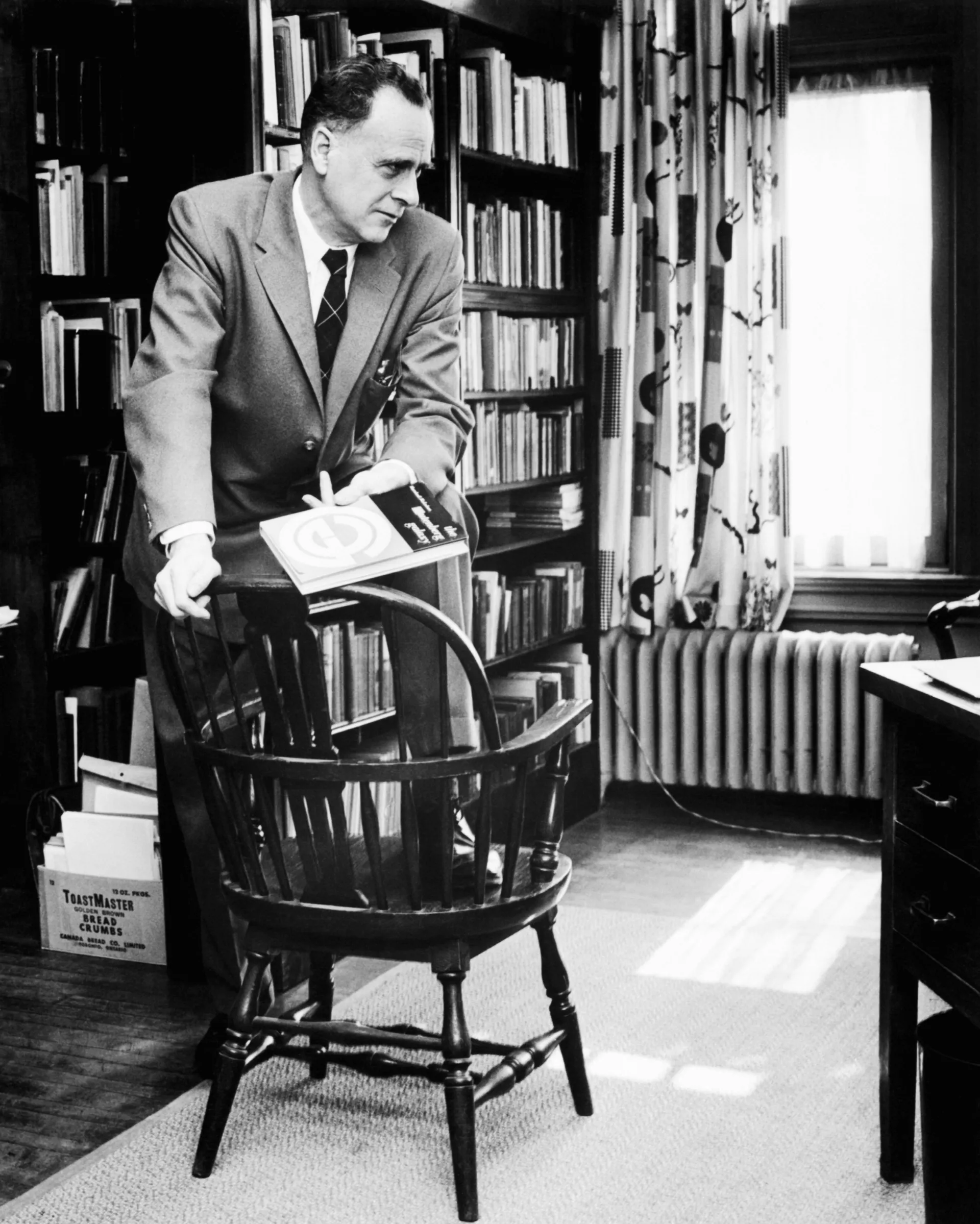
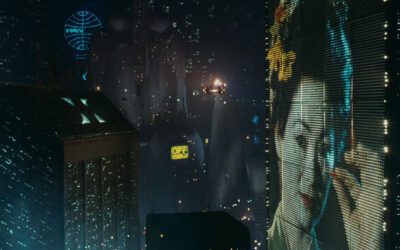
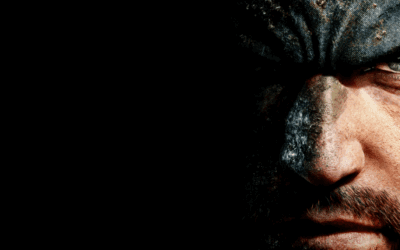



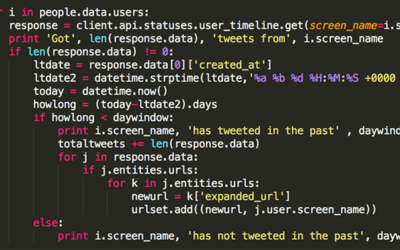












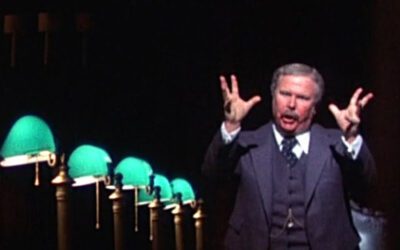


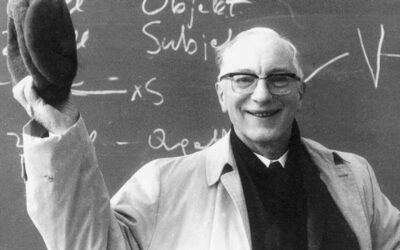



0 Comments